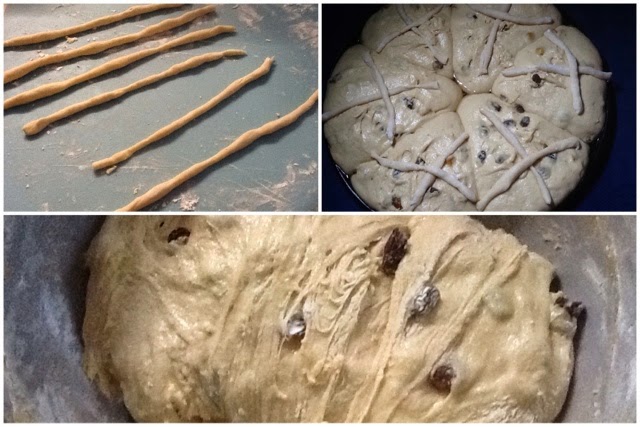I am avoiding eating commercially made breads so I was very excited to discover this recipe for sourdough that can be made in a bread machine!
This recipe comes from the Weston A Price Foundation's
"Healthy 4 Life" dietary guidelines brochure.
Weston A Price was a dentist who studied the diet, lifestyle and health of indigenous cultures around the world in the 1930's. He found a definite connection between the consumption of traditional and natural foods and the maintenance of good health.
So why sourdough?
The "Healthy 4 Life" guide explains that:
"Grains, legumes and nuts and seeds . . . are a source of many nutrients, including B vitamins, minerals and special types of fats. However all seeds contain what scientists refer to as "anti-nutrients", substances that block the uptake of nutrients, block digestion and irritate the intestinal tract. In traditional cultures all over the world, grains are very carefully prepared to lower the level of these compounds to make grains, legumes and nuts easier to digest. These preparation techniques include roasting, long soaking of beans followed by cooking, soaking grains in slightly acidic water, followed by cooking, and fermenting bread dough to make sourdough bread. These preparation techniques not only make these foods easier to digest, they also greatly increase vitamin levels. In cultures where people depend on grains, legumes and nuts for most of their calories, these preparation techniques ensure that they get ample nutrition."
BREAD MACHINE SOURDOUGH
1/2 cup plus 2 tablespoons yoghurt
3/4 cup water
4 cups wholegrain flour, less 3 tablespoons
1 3/4 teaspoons dried yeast granules
3 tablespoons arrowroot powder
1 teaspoon unrefined salt
1 tablespoon molasses
2 tablespoons butter
Mix together yoghurt and water and add to flour. Mix to form a dough. Cover and leave in a warmish place for 18-24 hours.
Put the dough plus the yeast, arrowroot powder, salt, molasses and butter in the breadmaker. Set it to a wholemeal setting and begin. When it's part-way through the kneading section, check that all the ingredients have mixed together and check the consistency. If it is slimy, add some more arrowroot, if it's too dry add a few more drops of water, drop by drop. Proceed as directed and enjoy the bread!
The first time I made this recipe I used the standard wholemeal setting on my bread machine. It turned out ok.
The second time I made it I decided to try the machine's turbo setting. I hadn't used this setting before and the bread machine's manual does warn that loaves are likely to be heavier due to less rising time. To my surprise the bread turned out better than the first time I made it, so I have used the turbo setting ever since. The turbo setting on my bread machine takes just 1 hour and 5 minutes which means that I can put it on after work to have yummy fresh bread with dinner.
So far I have successfully made this recipe with wholemeal Atta flour, organic wholemeal spelt flour, and Powlett Hill GMO free biodynamic stoneground wheat flour. I have also made a loaf with all Powlett Hill GMO free biodynamic stoneground rye flour. That one was a little heavier but still yummy. A mixture of the stoneground wheat and rye flours worked better.
I use b d Farm Paris Creek organic natural yoghurt because it's the most natural, natural yoghurt that I can find. It's organic, biodynamic and made from non-homogenised milk.
I like to use Mainland Buttersoft butter because it is pure butter but easy to spread because it's "triple churned". Other spreadable butter brands are a blend of butter and canola or sunflower oil.
So far I have found the flour to liquid ratio to work well and haven't felt the need to add extra arrowroot or water on checking the mixture as the recipe suggests. This may of course vary depending on climate conditions, ie more or less humidity.
Obviously this is not going to produce a loaf that looks like your commercially baked sandwich loaves, in fact it looks more like a banana bread, so it's not really suitable for sandwiches. That doesn't bother me though because I rarely eat sandwiches these days, opting for salads for lunches instead. It is however very delicious served freshly baked, with real butter, accompanied by a good slow-cooked stew! I also like to have it as a snack toasted and spread with tahini and a little manuka honey.
Source / Further information
http://www.westonaprice.org
http://www.westonaprice.org/basics/principles-of-healthy-diets
http://www.westonaprice.org/images/pdfs/healthy4life2011.pdf
http://www.bdfarmpariscreek.com.au/index03.php?id=36&pl=20&tl=8 natural ~ yoghurt available from Woolworths supermarkets*
Jimmy's Atta Wholemeal Flour and Macro Organic Spelt Flour ~ available from Woolworths supermarkets*
http://powletthill.com.au/tablet/flour.html ~ GMO free biodynamic stoneground flours available locally from Greenies Real Food http://www.greeniesrealfood.com.au
http://www.mainland.com.au/cheese-product/buttersoft-pure-butter/ ~ available from Woolworths supermarkets*
*possibly also available from Coles supermarkets, I just haven't checked yet!
~ take every opportunity to put the good stuff in ~
This blog is about me, what I'm doing, what's working for me, and what's not. It includes my experiences and opinions. It is for general information only and is in no way intended to replace the advice of a health care professional.




